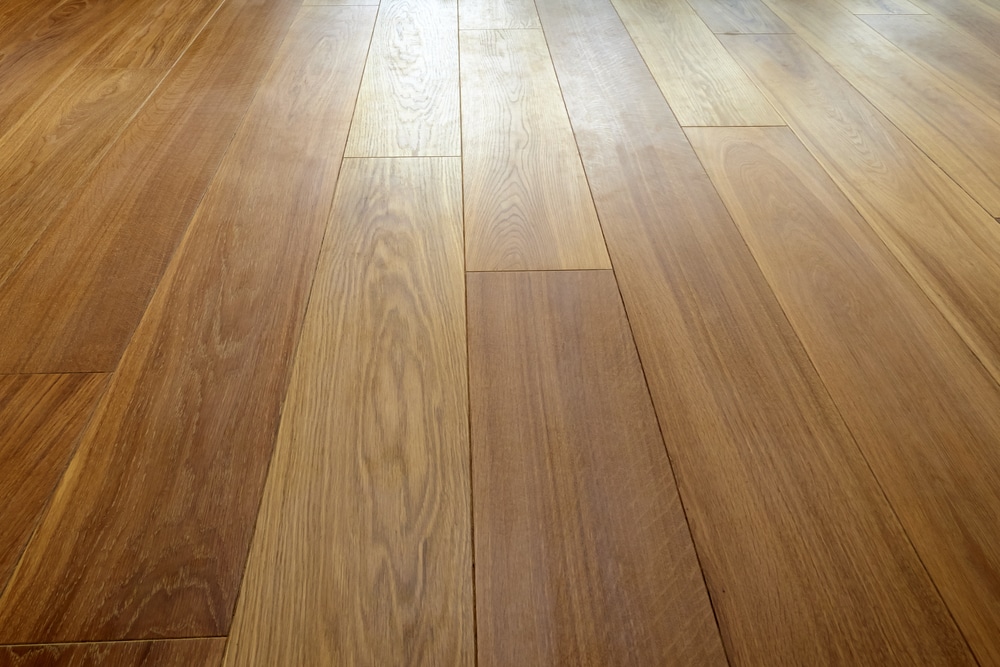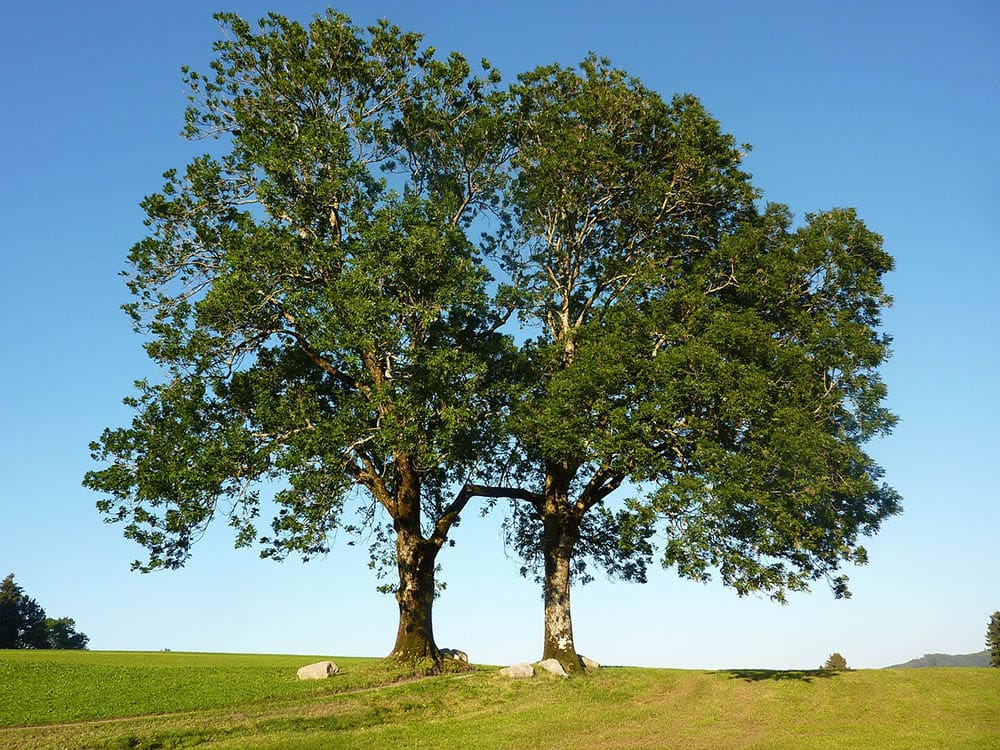Is Ash a Hardwood? Types, Facts & FAQ
-
Pete Ortiz
- Last updated:

Ash is often used in both modern and traditional homes as a wood flooring option. As timber, it has a light, grainy color that is often recognizable when compared to other types of wood.
It may not be as commonly used as Beachwood oak, but it’s definitely worth considering if you’re looking to have hardwood floors installed. Ash is considered a hardwood, similar to walnut, oak, and cherry. Keep reading as we explain further.
Is Ash Considered Hardwood?
It’s light in color, but strong and dense, making it excellent for hardwood flooring.
Many homeowners find ash to be a great sort of middle ground when it comes to floors, as it hovers in the middle when it comes to pricing. Also, it isn’t too dark or too light to where it’s hard to work your interior design ideas around it.
Growth Zones and Appearance
Ash trees are commonly found in hardwood forests on the east coast of the USA and Nova Scotia. They are hardy trees and are common in growth zones 2 through 6. Ash tree varieties can grow to over 100 feet in height and have dense crowns of branches at the top of their trunks.
Ash lumber can be used for many purposes other than flooring, including making tools such as picks, rakes, and shovels, and shovels as well as sports equipment such as tennis racquets and hockey sticks. Ash is also used to make different types of furniture including drawers, cabinets, and bed frames.
Texture and Grain Details
Ash actually comes in a variety of colors, from pale straw hues to dark brown. The sapwood is creamy white while the heartwood can range from light tan to dark brown. The grain is straight and thick, with occasional wavy patterns. Ash has a strong grain pattern that is often accented using darker stains. It looks similar to oak in many ways but has a busier appearance than maple-stained floors.

Strength
Ash is rated at 1320 on the Janka scale. This rating makes it ideal for hardwood floors because of its strength. A wood’s Janka rating is used to determine hardwood floor durability. Zero is the lowest hardwood floor material and the softest wood on the Janka rating scale.
Workability
Ash is well-suited to gluing, screwing, and nailing — which is why it’s so commonly used for tools and other equipment. It’s very easy to dry and doesn’t easily warp when it’s wet. It’s also easy to stain and sand, which is impressive given its dense texture. Just as impressive is its shock resistance and pliability, which makes it easier to process at lumber mills.
Using Ash in Hardwood Flooring
Ash is a versatile hardwood that can be used in any room or area. Although the coarse grain looks similar to oak, the colors are very different. You can choose from a variety of colors for the heartwood of ash, such as gray, pale yellow, and light brown.
Many homeowners prefer to not use colored stains on ash, but instead, to use clear stains to enhance the wood’s natural beauty. It is also easy to modify the flooring with darker stains to match your home’s decor. It is a great choice for people who prefer a more uniform and consistent pattern in their flooring.
Ash is durable and can be used in high-traffic areas without fear of scratches, dents, and other damage. It is not recommended that ash flooring be placed in areas where it may be subject to excess moisture or standing water, as is the case with all hardwoods.
Ways To Protect and Maintain Ash Flooring
It’s important to be careful with any hardwood flooring, despite its noted durability. And preventive maintenance will go a long way toward keeping your Ash floors looking their best. So, it’s best to protect all areas with high foot traffic with runners or rugs to prevent damage.
Wear Soft-sole Shoes
Shoes, particularly those with high or pointed heels, should be taken off before walking on hardwood floors–and ash floors are no exception. To prevent scratches and gouges from damaging the flooring, place rug pads underneath the legs of furniture and under rugs.
Sweep It Regularly
It’s also important to maintain your ash hardwood floors. Sweep and mop the floors regularly to remove dirt and sand, and other debris. This will also prevent dirt and sand from scratching the floors and causing damage.
Also, be sure to clean up any spilled liquid or food immediately. Make sure to use products that are specifically made for wood floors and don’t contain harsh chemicals that may damage them.

Clean Up Pet Urine Immediately
If you have hardwood floors, sometimes a pet “accident” can be fairly easy to miss. However, an untreated accident can lead to obvious urine stains, odor, and discoloration that can become very difficult to remove.
Pet urine can permanently damage your beautiful ash flooring by ruining the polyurethane finish or seeping into unstained, uncoated floors and causing permanent discoloration.
If you have ash floors, you also want to ensure that you keep your pet’s nails clipped. Though these floors are durable, over time they can become susceptible to scratches from day-to-day foot traffic. If there are areas where the pet frequents, you may want to consider placing a runner or a large area rug down on the floor.
Common Types of Ash Wood Used in Flooring
Globally, there are at least 50 different species of ash wood. Less than half of these are found in the United States, but many are shipped from other countries. Let’s take a look at the most common ones used for hardwood flooring.
White Ash
White ash trees can grow up to 120 feet high and have a trunk diameter of around 6 feet. Although it appears whiter than other varieties of ash, it’s not exactly pure white, but paler yellow. This is probably the most commonly used ash when it comes to flooring, tools, and equipment. It has straight, even grains, and has a subtle coarse texture.
Black Ash
These ash trees are native to the northern wetlands of Canada and are the smallest of all ash trees, growing to about 40 to 60 feet at maturity. They thrive in shady swampy locations, which contributes to the dark wood tones in their inner bark. The dark brown sapwood takes up most of the trunk and leaves little space for the lighter-colored heartwood.
Green Ash
Green ash wood has a light to medium-brown heartwood and beige to light-brown sapwood. It’s medium in terms of coarse texture, similar to oak, and it can be used for a variety of purposes. The height of green ash trees at maturity is between 50 and 65 feet.
European Ash
European ash wood is a wood that grows in Europe, Asia, and some parts of North America. It is very versatile and has a light-medium brown heartwood. It is used to make tables, chairs, and hardwood flooring.
 Wrapping Things Up
Wrapping Things Up
Ash wood makes for a great hardwood flooring and can go with any home decor. It’s a durable hardwood and isn’t that expensive compared to other similar woods. That being stated, it’s important to keep ash hardwood floors clean, free of debris, and to immediately remove any stains and spills.
- https://www.elmwoodreclaimedtimber.com/blog/ash-flooring
- https://www.wood-database.com/wood-articles/ash-wood-black-white-and-everything-in-between/
- https://www.baillie.com/white-ash
- https://wideplankflooring.com/blog/hickory-vs-ash/
- http://www.hardwooddistributors.org/postings/ash-lumber-and-the-emerald-ash-borer
- https://northwesthardwoods.com/products/glacial/ash/
Featured Image Credit: CapturePB, Shutterstock
Contents


